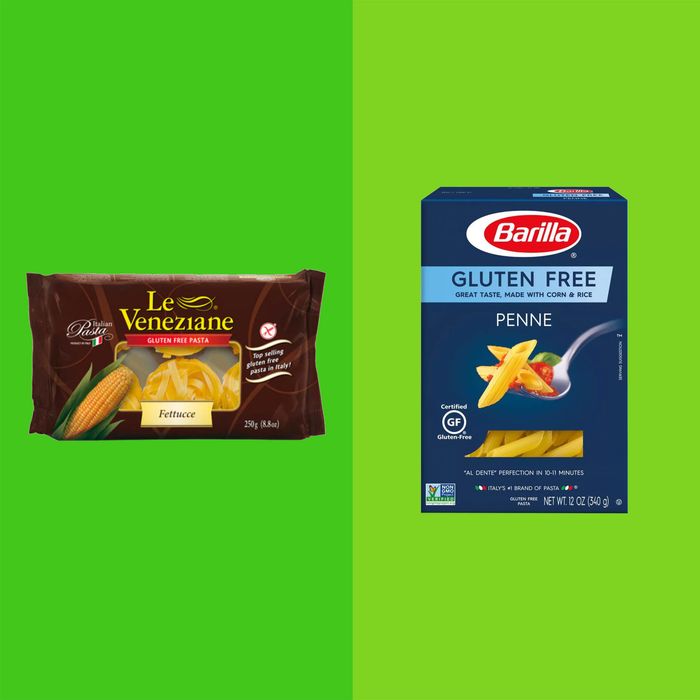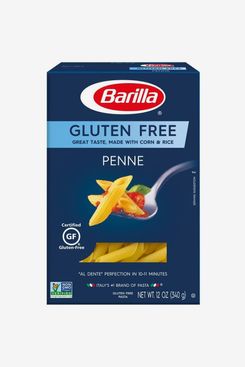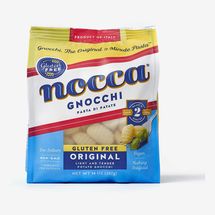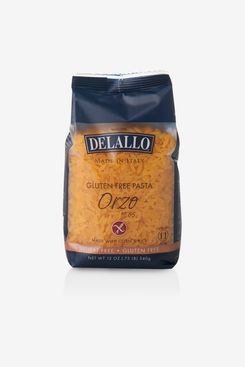
The first thing people ask me when I say I’m gluten-intolerant is, “How do you live without pasta?” And, well, honestly? I’m doing just fine. Gluten-free pasta has come a long way from the mushy, tasteless noodles that I tried when I went gluten-free a few years ago, and many mainstream brands actually provide truly great gluten-free alternatives.
For the uninitiated, there are two kinds of gluten-free pastas: ones made from things like corn and rice flours that closely resemble wheat-based pasta, and the ones marketed as healthy alternatives to wheat-based pasta and made from things like chickpeas and red lentils. Since going gluten-free, I’ve tried dozens of both types, though I far prefer the former. When I eat gluten-free pasta, I’m looking for the closest match to wheat-based pasta possible, not a “healthy” approximation of the real thing.
I judge pasta on five factors: taste, texture, sauce absorption, longevity in the fridge, and price. Not all gluten-free pastas taste like pasta — the high-protein ones absolutely do not — and many have a mushy or grainy texture, negating the joy of eating pasta. To counteract the texture problems, some brands make their pasta thicker, which gives the noodles a chewy texture (also not great). I’ve also found that some gluten-free pastas puzzlingly don’t absorb sauce — you have to drown the pasta in sauce to pick up any flavor. And yet another issue: Most gluten-free pastas need to be eaten fresh. Some literally crumble the next day in the fridge, while others harden to the point of inedibility. (Before I found actually good alternatives, I’d painstakingly weigh out my pasta to ensure I wouldn’t waste any food because I couldn’t save it for the next day.) Lastly, gluten-free stuff is generally expensive. And while that’s a reality I’ve grown to accept, some things are so much pricier (think: $11 for a nine ounce box of spaghetti) that it’s simply not worth it to me, so I often seek out reasonably priced options.
With all that said (and eaten), I feel confident that these eight are the best gluten-free pastas, from spaghetti to gnocchi. They meet most, if not all, of my criteria listed above, and they’re so tasty you can hardly tell the difference.
The best overall gluten-free pastaI’ve seen Capello’s — which costs $11 for nine ounces — ranked as the best gluten-free pasta on websites and in magazines, and while everyone is entitled to their own opinion, they’re all wrong. Barilla is by far the superior gluten-free pasta. Because it’s made from a magical combination of rice and corn flours, it has almost the exact same texture and taste as wheat-based pasta, so much so that my boyfriend, a gluten eater and pasta lover, once said he couldn’t even tell the difference. I’ve tried both the penne and spaghetti — with everything from my very Italian father’s red sauce to homemade clam sauce — and every single time, it has properly absorbed the sauce. The spaghetti does tend to break apart easily if overhandled or mixed too vigorously with pesto, but I would say that’s probably true for all pastas. It’s best fresh, as most things are, but if needed, it can last about three days in the fridge with or without sauce on it. Plus, from a budget perspective, this pasta is only 70 cents more than Barilla’s wheat-based pasta (that’s a fifth of the price of a box of Capello’s).
If I can’t have Barilla — which sells out frequently at my local grocery store — and I want just a simple penne or spaghetti, I go for Ronzoni. Unlike Barilla, which is made from only two flours, Ronzoni is made from four: white rice flour, brown rice flour, corn flour, and quinoa. It’s very similar to Barilla, though the spaghetti isn’t quite as good with oily sauces, so I usually stick with red sauce. This brand doesn’t last as long in the fridge as Barilla. After a day, it starts to crumble on the reheat, but if made fresh, it’s practically the same. Ronzoni does have one odd quirk, though. When I salt my pasta water, like I usually do, this stuff becomes almost too salty, so I usually just skip that step altogether.
Bolognese sauce just needs fettuccine. Because I’m not eating bolognese that often (I only eat it if my dad makes it for me), I splurge on my pasta for such special occasions. I think Le Veneziane is better than Capello’s, even though Capello’s is specifically known for its fettuccine. Le Veneziane has more flavor, and when used with a heavy sauce, the noodles really soak it in, allowing a generous coating of sauce to hold onto the noodle. Because Capello’s is made from almond flour, the noodles are denser than they should be, and the noodle doesn’t fully embrace the sauce.
I know I made a big deal about searching for the closest match to real pasta as possible, and Tinkyada makes only brown rice pasta, so it’s not quite the same — but I still think it’s a worthy alternative. Gluten-free pasta doesn’t come in too many novelty shapes. The brands worth buying typically only make penne, fusilli, and spaghetti, whereas wheat-based pasta comes in a plethora of shapes and sizes. Tinkyada, refreshingly, makes lots of fun shapes and sizes of its pasta, like elbows and what it calls “spirals.” I prefer the hardier taste from the brown rice for certain things, like stews, and of all the brown rice pastas I’ve tried, this one is the best. The packaging itself promises it won’t be mushy, and I can confirm that’s true. It doesn’t last in the fridge more than a day, if that, so I weigh this one out if I’m using it.
Best gluten-free pasta for lasagnaDeLallo makes great gluten-free pasta, but because it’s so much more expensive than the other options, I only use the brand for more specific items, like lasagna noodles, which are the best I’ve tried. They cook perfectly, and you genuinely wouldn’t be able to tell they’re gluten-free.
There are two brands of gnocchi that I highly recommend: DeLallo and Nocca. When cooked, some gluten-free gnocchi takes on a gummy, almost mushy texture that regular gnocchi just doesn’t have — more akin to a pierogi rather than gnocchi (and no, I’m not overcooking it). But DeLallo and Nocca both mimic the exact taste and texture of regular gnocchi. I’ve had both numerous times and haven’t found much of a difference between the two, so I buy whichever I see first.
Best gluten-free orzoYes, DeLallo again. But its specialty gluten-free pastas truly are top-notch. Before I went gluten-free, I ate orzo weekly because it was a nice change from the noodles or rice I typically ate, especially for lunches. But I hadn’t seen any gluten-free alternatives until I stumbled upon this on a shelf in a health-food store. It’s a bit softer than regular orzo, but that’s not a deal-breaker, because very few brands (if any) actually make orzo. It also holds up well in the refrigerator for a few days, so I can make extra and have it for lunch later in the week.
The Strategist is designed to surface the most useful, expert recommendations for things to buy across the vast e-commerce landscape. Some of our latest conquests include the best acne treatments, rolling luggage, pillows for side sleepers, natural anxiety remedies, and bath towels. We update links when possible, but note that deals can expire and all prices are subject to change.
The Link LonkApril 02, 2021 at 02:30AM
https://ift.tt/2PiVkZZ
After Trying Dozens (Upon Dozens), I Found the 8 Best Gluten-Free Pastas - New York Magazine
https://ift.tt/31oM9uv
Pasta









Silahkan bermain Tebak ANGKA bersama kami di DEWALOTTO kami juga menyediakan permainan SBOBET, IBCBET dan SABUNG AYAM
ReplyDeletelangsung daftar dan bermain minimal depo hanya 20 rb saja silahkan ADD WA +855 888765575 Terima Kasih admin...:)